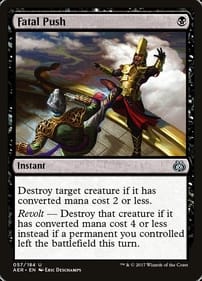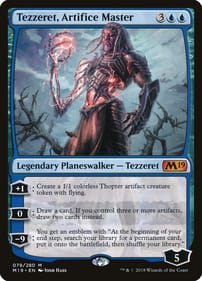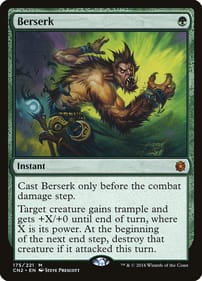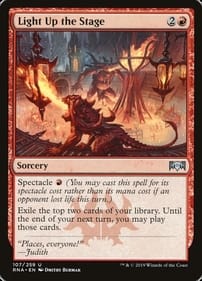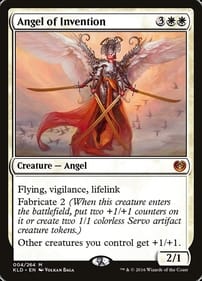This is a Golden Age for Comics
Let me begin by making a bold statement.There has never been a better time in human history to be a fan of comics than now.The Golden Age of Comics is upon us. Don’t let anyone tell you otherwise.There has never been a greater variety of comics dealing with a multitude of subjects. Comics art has never been better. Plus comics are finally being taken seriously as a form of expression. And there are more opportunities to discuss comics and appreciate them than at any time before.Don’t believe me? Imagine a time when most of the comics on the spinner rack at your local drug store were published by two companies. They were all dismissed as stuff for children. There was no such thing as graphic novels, no major publisher looking for sustained narratives that weren’t about heroes with superpowers. And if you wanted to share your love of comics with fans around the world, you had no outlet to do so.I grew up in such a time. It was called the 1970s. Trust me, things were not better in my day. Back then, the general view was that comic books were something children grew out of. Why didn’t Stan Lee use his real name when he helped create the Marvel Universe? Because he was saving it for his attempts at “serious” literature.Nor was he the only one, as creators were made to feel embarrassed about working in an industry not treated like a legitimate trade. When new comic books came out, they weren’t reviewed in the newspapers of record. Movies featuring costumed do-gooders were few and far between.Fast-forward to 2024. Things are so much better in so many ways.Comics and graphic novels are recognized as a valid medium for telling all kinds of stories, not just ones about guys and gals in tights.Want to write about what it’s like to work in Alberta’s oil sands? Want to recollect your teen years toiling in a pulp and paper mill, dreaming of being a cartoonist? Want to explore the effects of an autocratic government in North Korea? Want to recount your hilarious attempts to capitalize on the “vinyl resurgence?” All of those stories have been told in graphic novels by Canadian creators. It’s true superhero comics did have a mass audience in the 1940s among children, but let’s suppose you’re a fan today of a particularly obscure character – say Marvel’s Rocket Raccoon. If you want to learn more about him, there are entire monthly titles devoted just to his exploits, featuring only him without any of his Guardians of the Galaxy teammates. Plus you can buy action figures and every other possible piece of merchandise based on Rocket.In fact, thanks to big-budget motion pictures and streaming shows, superheroes are more central to our culture than they were even back in the post-Second World War period. These productions feature serious talents like Robert Redford, Cate Blanchett, Jack Nicholson and Natalie Portman.The New York Times wasn’t reviewing comics or graphic novels when I was falling in love with them as a kid growing up in small-town Ontario. Academics weren’t doing serious research on them. There wasn’t a Scott Pilgrim or Sweet Tooth series on Netflix for me to enjoy, because none of that infrastructure existed.Nor did we have creators like a John Porcellino, whose work is so perfect that I consider it poetry in the form of sequential panels. Hey, I still love the Marvel mags of my childhood, but they weren’t that creative. And now we have a dedicated network of retailers like L.A. Mood devoted to selling comics, connected by a global-information source that gives everyone the tools to express their love for whatever title or character or storyline they fancy. If you like a property, there’s a website for it. All of which is bolstered by a group of in-person events – here in London, that includes Free Comic Book Day, Forest City Comicon, and Tingfest. One of the big secrets in life is to know you have it good WHEN you have it good, not later. As the song says, you don’t know what you got till it’s gone, so my advice to anyone reading this column is to revel in this current Golden Age while it lasts.Dan Brown has covered pop culture for more than 31 years as a journalist and also moderates L.A. Mood’s monthly graphic-novel group.
Lorenz Peter’s Latest Graphic Novel is Like Spinal Tap, Only Deeper
I don’t know how it escaped my notice last year, but Lorenz Peter’s Moon Boots was one of the best graphic novels to emerge in 2023. On one level, it’s a straightforward tale of a cowboy-boot-wearing troubadour who goes on a road trip from Northern Ontario to the prairies to Calgary. On another, it’s a magically realistic trip about an individual who stretches out of his comfort zone, finding moments of surrealistic beauty and heart-warming friendship along the way. However you define it, it’s worth reading. Published last April by East Coast comic champion Conundrum Press, it follows other books by Peter such as On Vinyl, which I chose as the best graphic novel of 2018. The subject of that one is the “vinyl resurgence” we’ve heard so much about. In Moon Boots, the author/artist extends his preoccupation with music, only now he’s focusing on how one eccentric cowboy creates it. Lester Lafleur is the kind of natural songwriter who, moments after being kicked out of a small Ontario town, begins composing a tune about the police officer who escorted him to just beyond city limits: “I met her in the station, doo bee doo, she had nothin’ to do.” What comes next is Lester finds a path in the woods, which he calls an “ideal setting” to get inspired. Strumming his guitar under a tree, an audience of woodland critters gathers, with the owl perched on a branch above asking, “Hey, do you know any Lightfoot?” “Cockburn was a better guitar player,” another bird responds. If that sort of surrealism delights you, you’re in for a treat. The whole point of reading Moon Boots is not to anticipate whether Lester will succeed in his quest to form a band, then record an album, but to enjoy the journey he’s on. Along the way, there are moments of perfection, such as the three-page wordless spread that details the countryside – lakeshore, swamp, dragonflies — Lester is passing through as the hitchhiking passenger in a tractor trailer. The collision between town and country is another thread running through Moon Boots. As the miles unfold, Lester reveals that he couldn’t deal with living in Toronto: “I just couldn’t hack it in the city. I’m better off on the road.” Passing through different communities, a picture emerges of midsize Canada, a place rife with Tim Hortons locations. In fact, the singer’s truck-driving companion is a big believer the coffee chain should bring back it’s flip-lid cups: “You know, I remember a time when coffee lids didn’t spurt like a dolphin. Whole world’s gone to hell.” There are also restaurants like Crabby Moe’s and bars that host Shania Twain tribute acts – the one Lester opens for is called Twain Wreck. This is the urban landscape that comes after everything in the country has been turned into a mall. Moon Boots is a funny, touching book, with quirky touches. Think Spinal Tap meets Salvador Dali. There’s an RV – called an Eon-cation Omega Comf Wagon – that is so long it takes two hours to pass on the highway. When a Sheryl Crow tape gets eaten by the truck’s tape deck, the cassette sprouts wings, ascending to the heavens. And when our hero reaches the wide prairies and gets a deflated tire in a car a friend has borrowed, a spare comes bouncing across the flat terrain, sent by unseen roadside-assistance helpers miles away. There are no evil or untalented characters in Moon Boots, just surprising relatable individuals doing the best they can with what they have, like the queer homeless teenage goth who joins Lester as his drummer, photographer, driver and manager. Being a dog lover, I felt an instant pang in my heart reading one scene in which a decrepit canine sits exhausted on a farm front porch. The pitiful creature doesn’t even have the strength to bark properly at Lester, croaking only a “Harf, sputter,”’ as a greeting. I nearly cried. Dan Brown has covered pop culture for more than 31 years as a journalist and also moderates L.A. Mood’s monthly graphic-novel group.
The Rolling Stones comic you both want and need
By Dan BrownRolling Stone Keith Richards is arguably the greatest creator of guitar riffs in human history. Think (I Can’t Get No) Satisfaction, Start Me Up, Brown Sugar, Honky Tonk Women, and Jumpin’ Jack Flash, for starters. Although Richards has been fully dedicated to the rock lifestyle for decades, his voracious appetite for destruction didn’t stop him from turning 80 years old on December 18.So there’s no better time for a look at The Rolling Stones in Comics, a 2019 graphic novel that tells the story of how Keef, Mick Jagger and the rest of the lads made their mark on music history. It’s a story of sex, drugs, and more drugs, made up of several vignettes outlining significant moments in the life of the greatest rock band in the world. It will mainly benefit younger readers seeking an introduction to the band’s exploits.That said, I consider myself a big Stones fan, and I learned several things from the book I had never heard.For example, did you know there was a period in the 1960s when Jagger floated the rumour he would run for the British House of Commons as a Labour candidate on a platform of drug legalization? That came as news to me.Each of the chapters, running about four pages, is done by a different artist, none of them known to me. This is because the book was originally published in French, and draws heavily on European talent. If you’re looking for the work of mainstream DC/Marvel pencilers or inkers, you’ll have to find them elsewhere.What you do get in this book is a vivid group of mini-adventures, like the notorious 1967 bust that took place at Redlands, a West Sussex property owned at the time by Richards, the first of his many high-profile brushes with the law. Also covered is a what-if kind of story that imagines what thoughts were going through the mind of doomed founding Stone Brian Jones as he drowned in his own back garden.I really enjoyed the piece explaining open tuning, a method for placing one’s fingers on guitar strings that Richards stumbled across with the help of other musical greats. It opened up a plethora of creative avenues for the songwriter.As the narrative notes, “In 1968, the Stones already had their own style. With open tuning, they found their sound.”And naturally, the illustrators involved – names range from Anthony Audibert to Bruno Loth to Sarah Williamson – have a field day rendering one specific body part that will forever be associated with the group: Jagger’s voluminous lips.That said, Sir Mick doesn’t come off well in the chapter devoted to his solo career. There’s a revealing section in which Jagger asserts his authority over hired hand Jeff Beck in a Jamaican studio circa 1984, ordering engineers to erase a guitar break the virtuoso has taken great pains to lay down. “Mick liked to be the one giving orders,” the narrative explains. “He wasn’t doing a solo album just to revisit the same old band problems.”My one disappointment: There’s no chapter devoted to the bacchanal in Southern France that was the Exile on Main Street sessions. That 1972 double album gave fans a taste of an alternate future by showing what the Stones would have been like if Richards hadn’t been too strung out on heroin to wrest leadership from lead vocalist Jagger. In my mind, The Rolling Stones in Comics ranks alongside the 63-issue Rock ‘N’ Roll comics line of the early 1990s, which told the origin stories of such bands as Black Sabbath, the Cure, Metallica and the Who. As a genre, comics about rock musicians are the print equivalent of VH1’s Behind the Music series, only done with more verve and less reliance on a formula.Dan Brown has covered pop culture for more than 31 years as a journalist and also moderates L.A. Mood’s monthly graphic-novel group.
A Question for Our Times: Is Santa Claus a Superhero?
By Dan BrownHe has abilities that can only be described as superpowerful, among them omnipresence and the gift of being able to see into the human heart. Yet the question remains: Is Santa Claus a superhero? Let’s talk this one out, OK?So, for starters, to be a superhero in the same vein as Superman or Wolverine you need to have a secret origin that explains how you became a champion of everything good, right?But Santa was never bitten by a radioactive spider, nor did he come to Earth as a refugee from a distant planet before he started delivering presents to the world’s children.It’s said Santa was inspired by a real-life person, Saint Nicholas, but that’s not the same thing as having a hidden origin story. Santa has always been . . . Santa, even if how he is depicted changes over time. (I believe the Santa Clause movies explain how an ordinary person, Tim Allen, becomes Santa, but I haven’t seen those films.) This one would seem to go in the “against” column.What about another hallmark of our favourite heroes, the flashy costume?Yes, Santa definitely has a signature look, which we are told owes a lot to the artists employed by the advertising department at Coca-Cola. In North America, he is clad in red with white trim and even though he’s roly-poly, this doesn’t slow him down on Christmas Eve. There’s also the endless white beard.Red caps with white pom-pom have even become known as “Santa hats,” so I would say he checks the “costume” box.What about the other accoutrements of superheroes?Sidekicks? Check. (He’s got the elves and Mrs. Claus.) Cool vehicle to zoom around in? Check. (His magical sleigh.) Hideout? Check. (His North Pole abode.)He even has a special vulnerability, akin to the Man of Steel’s kryptonite allergy. What is it? You’ll recall from the song Rudolph the Red-Nosed Reindeer how Santa’s operation grinds to a halt when he is blocked in by . . . fog. He is helpless to dispel the cloudy banks or see through them, and is only able to make his deliveries that night with the help of the outcast reindeer’s unusual snout. So checkmark again.Superhero fans know that the best ones always have a sworn enemy, for example Lex Luthor or the Joker or Doctor Octopus or Doctor Doom. Does Santa have a nemesis? I suppose you could cite the Grinch, but that character doesn’t ever interact with Santa, just the Whos of Whoville, in the original book.We’ll put Santa down as lacking a foe dedicated to foiling his mission. No checkmark.But now for perhaps the most telling question. Does Santa have superpowers?Oh my yes. First of all, he appears to be immortal, like Wolvie. Santa is always frozen at the same age, and is impervious to sickness and disease. Santa never tires, so he has an unlimited supply of energy.And what else would explain how he can deliver all those toys in a matter of a few hours? Either he’s omnipresent, or he has super-speed along the same lines as the Flash. Plus there’s another part to his powers. As we’ve always been told, Santa Claus can tell if a human being has been naughty or nice throughout the year. He has that in common with the pulp hero the Shadow, who could see what evil lurks in the hearts of men.Santa doesn’t really punish the bad ones as, say, the Punisher or Judge Dredd, but he does reward those who make the right choices. (I don’t think Santa’s standard of moral conduct is written down anywhere.)But I know what you’re thinking: Just because he has superpowers, that doesn’t automatically make him a superhero.Santa could be something else. He could be a deity (like Thor), a mutant, or even a force of nature. Just because he’s really, really powerful doesn’t mean he necessarily qualifies.But there is one more argument for Santa Claus being considered a superhero: He has appeared in many comic books!!What say you? I would love to hear your arguments for and against in the comment box below.And while I’m at it, I hope you all have a peaceful festive season!Dan Brown has covered pop culture for more than 31 years as a journalist and also moderates L.A. Mood’s monthly graphic-novel group.
Looking Back at 2023: The Year in Comics
By Dan BrownThe categories are arbitrary. My picks are open to debate. You likely have come to totally different conclusions.That said, here are the highlights – according to no one but me – from the last year in the comics biz.Villain of the year: The hip dragon from Scott Chantler’s Squire & Knight graphic novel, who sounds to my ear like a beach bum. When attacked by a self-promoting paladin, he responds in a laconic way: “Pretty rude, man.”Hero of the year: Common sense, as portrayed in the same book, which comes from the Stratford-based comic creator. It outlines the adventures of a medieval do-gooder and his young apprentice, who refuses to jump to conclusions based solely on circumstantial evidence. Turns out common sense is actually not that common. Writer of the year: BealART grad Lynette Richards, for Call Me Bill, an evocative tale delving into a long-standing East Coast maritime mystery. Richards gives the title character, an actual mariner, a plausible back story, in the process paying tribute to someone who was ahead of the times. Artist of the year: London’s D.S. Barrick for his work on Murgatroyd & Nepenthe, which he describes as a tale of two travelers trekking through the hinterlands of the imagination. It’s a visual feast not to be missed.Comic of the year: Crimson Fall: Lambs of God. This Derek Laufman mini-comic about two mismatched characters, a cleric and a knight, can be read as a straightforward story about demons in a dungeon, but underneath that is a much broader debate about the limits of reason to explain the world around us.Graphic novel of the year: Palookaville No. 24, particularly the latest instalment of Nothing Lasts, Seth’s autobiography-in-the-making. He calls attention to the constructed nature of his life story, encouraging the reader to think about the way memory becomes fiction. Or was it always fiction? (I suppose Seth’s latest is technically a comic, but it has a hard cover so it qualifies as a graphic novel in my mind. It’s not like Seth is publishing it monthly.)Panel of the year: The final panel of Are You Willing to Die For The Cause?, the Chris Oliveros book about the FLQ’s early days. On page 134, he shows the police celebrating the demise of the FLQ – just as the separatist terrorists were about to embark on their bloodiest exploits. “Hurrah!” the officers cheer. Bitterly ironic. The same book features a panel on page 123 of an FLQ hideout littered with empty Labatt 50 bottles. It doesn’t get more Canadian than that!Cartoon of the year: A New Yorker cartoon by Ellis Rosen depicts God, wine glass in hand, explaining to an angel helper why heaven looks different: “I had the vastness of creation replaced with hardwood floors.” Originally published two years ago, it came up in my New Yorker desk calendar on Dec. 1.Understatement of the year: Bob Iger, Disney CEO, said the glut of Marvel content online and in movie theatres has “diluted focus and attention” among fans of the company’s superheroes. (The Marvels, which I’m told is a strong movie, debuted with less than $50 million at the box office on its opening weekend, a first for a Marvel release.)Comeback of the year: Michael Keaton reprised his role as the Dark Knight in The Flash. By many accounts, the funnyman was the best thing about the motion picture, which served as the swan song for the current phase of DC’s big-screen superhero adaptations.Disappointment of the year: Marvel introduced Doctor Aphra in its Darth Vader title way back in 2015, yet still no movie or show built around the amoral archeologist. At this rate, the gonk droid will have its own Disney+ series before Aphra.Dearly departed: Among the comic creators who died this year are Al Jaffee, Joe Matt, Keith Giffen and Chris Browne. I once had a lovely conversation with Browne about how he continued the Hagar the Horrible newspaper strip after his father retired. Just a really nice dude to interview. The world is poorer without these guys.Comic blog/website/web presence of the year: I continue to enjoy a Facebook group seemingly titled with me in mind, Old Guys Who Like Old Comics. Jeremy Kirby is also doing yeoman’s service preserving his grandfather Jack Kirby’s legacy with his group the King of Comics.Comic journalism of the year: The book Dirty Pictures by Brian Doherty is a history of the underground comics scene in the U.S, the surprising part being how much of an impact these often-crude publications made on mainstream comics culture. It shows what can be done in the medium without an industry censor.Now, over to you . . . what were the comic highlights for you in 2023? I want to hear all of your picks in the comment box below. Feel free to invent some categories!Dan Brown has covered pop culture for more than 31 years as a journalist and also moderates L.A. Mood’s monthly graphic-novel group.
New Oliveros Book Details FLQ’s Reign of Error
By Dan Brown The new book from cartoonist Chris Oliveros, Are You Willing to Die For the Cause?, is an insightful look at a dark chapter in Canadian history. It’s even, in a way, darkly funny.It’s the tale of a bunch of stumblebums cosplaying as terrorists who – if you believe them – didn’t set out to take any lives, but still ended up with plenty of blood on their hands.You know what happened during the October Crisis of 1970 in Quebec, right? Well, this graphic novel fills you in on what was happening in the decade prior to that pivotal moment. It is, in comic terms, the origin story of the FLQ, the group (I hesitate to call it an “organization”) that would eventually prompt Pierre Trudeau to trigger the War Measures Act.You may know Oliveros as the founder and former publisher of Drawn & Quarterly, which has become a force in the comics world since its inception in 1989.This volume is the first in a two-part series about the Front de Liberation du Quebec – the second book, yet to come, will deal with events that are better-known, like Trudeau’s hard-nosed response to the supposed “parallel power” that arose in la belle province by advocating, violently, for separation.By the end of the 1960s, different iterations of the FLQ had gained notoriety with, among other glorious feats, the blowing up of innocent Canada Post mailboxes. One FLQ honcho even imagined he was a contemporary of Fidel Castro, the communist revolutionary who had taken over Cuba not long before. If Oliveros’ goal is to show the would-be Quebec liberators to be amateurs, he does a good job.One of the FLQ members stores sticks of dynamite in his apartment pantry, next to the breakfast cereal his children eat. A guiding manifesto is dictated, seemingly improvised on the spot. And on at least one occasion, a bomber has to find his own way to the target site because no one in the FLQ has access to a car. (The authorities come across not only as inept, but corrupt to boot.)It’s clear the storytelling project here is to underline the difference between the grand ambitions of the terrorists, and how events actually played out in the real world. So the reader will see page upon page setting forth what was supposed to happen as envisioned in the plans of the FLQ’s commanders, followed by a second sequence outlining the less-than-impressive real results. Or Oliveros will depict a historical figure like former Montreal mayor Jean Drapeau recalling the reign of terror, then the next panels will outline what the historical record indicates really happened. For example, the FLQ robbery of a gun store in 1964 wasn’t supposed to go off the rails, no one was supposed to get hurt, yet the “panic and confusion” that ensues once the would-be terrorists storm the place turns the raid into a “fiasco” in which two employees are left dead. Oliveros goes over the scene several times to illustrate what happens in the fog of a play war.And in case you don’t agree with any of his conclusions, at the end of Are You Willing to Die For The Cause?, Oliveros carefully explains where he got key details, such as dialogue.Even better, the artist/writer pulls the curtain back on himself, showing the gaps in his own creative process. He is open about how he compressed some events in his narrative, and fictionalized other panels in the interests of clear storytelling, which makes sense: Although Oliveros was born in the 1960s, he wasn’t, you know, in the room where any of this happened.So it’s consistent with his overall project that he would point to the constructed nature of this comic. That doesn’t make the book any less tragic, or comedic. Of course, the ultimate irony is how despite all of the FLQ’s actions, including the dramatic and deadly ones that will be the subject of Oliveros’s next graphic novel, Quebec remains part of a united Canada. As this book demonstrates, the best-laid plans often go awry.Dan Brown has covered pop culture for more than 31 years as a journalist and also moderates L.A. Mood’s monthly graphic-novel group.








